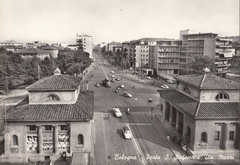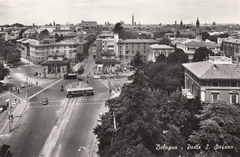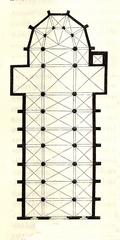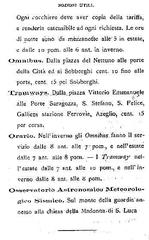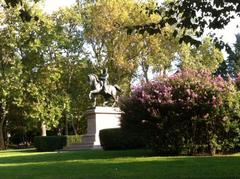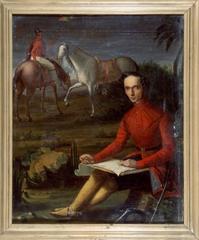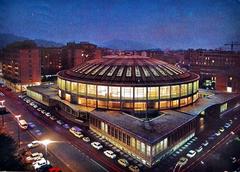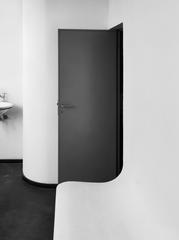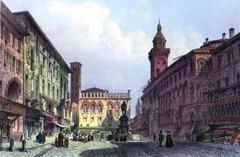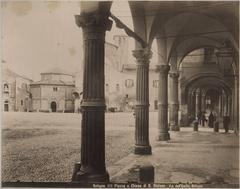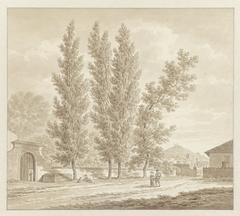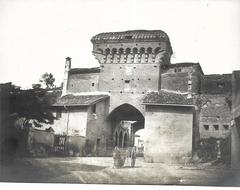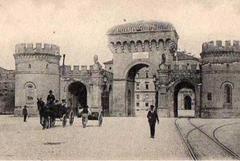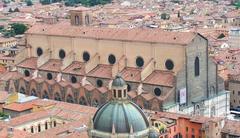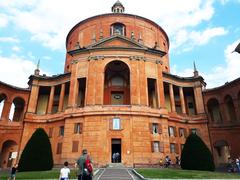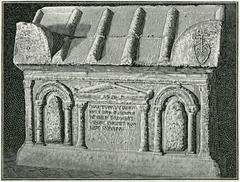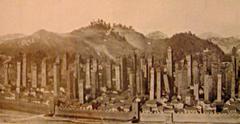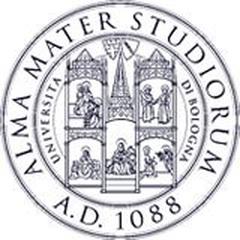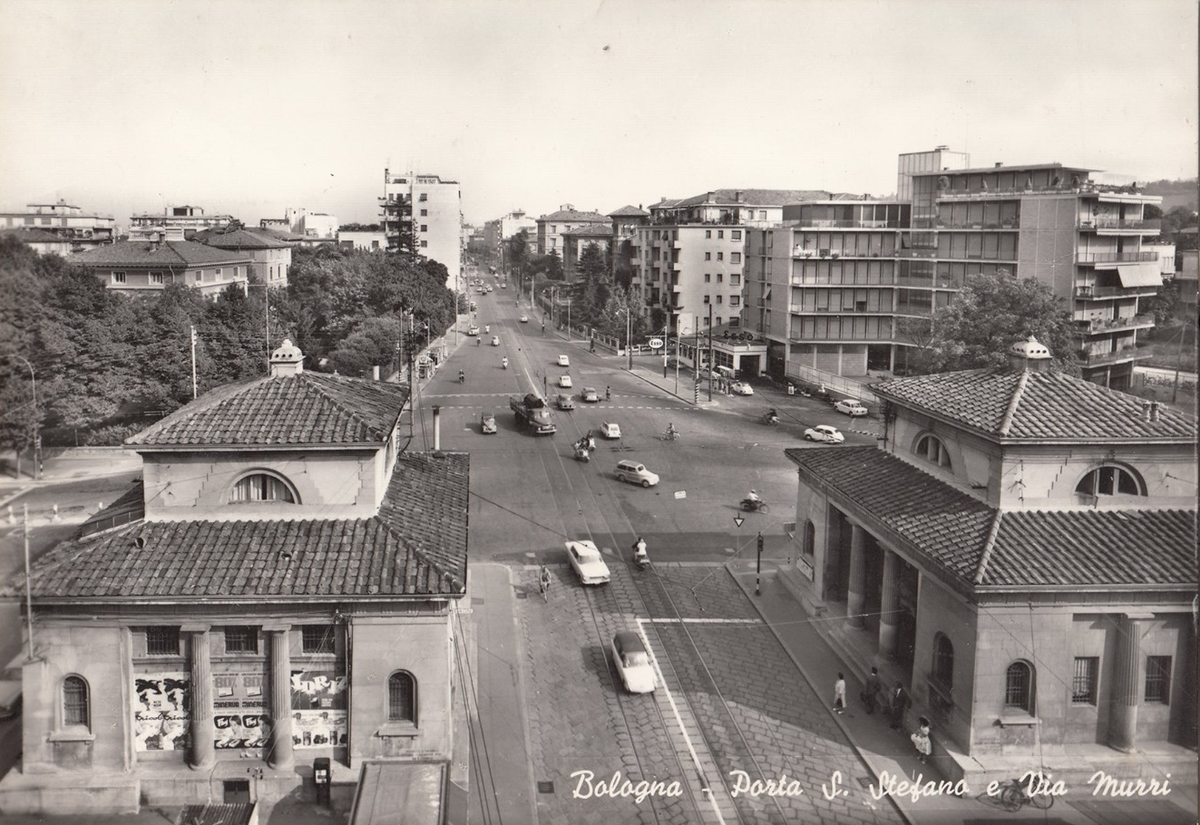
Visiting Hours and Tickets for Porta Santo Stefano, Bologna
Date: 24/07/2024
Introduction
Porta Santo Stefano in Bologna, Italy, is a historical landmark that encapsulates the city’s rich cultural and architectural heritage. Originating from the medieval period, Porta Santo Stefano was part of Bologna’s extensive urban expansion, influenced significantly by the establishment of the University of Bologna in 1088. This period saw the construction of porticoes, which became a defining feature of Bologna’s architecture, providing practical benefits and aesthetic appeal (Italia.it). The porticoes, including those at Porta Santo Stefano, were officially regulated in 1288 to ensure a uniform architectural style, contributing to Bologna’s unique urban identity. Over the centuries, Porta Santo Stefano has witnessed significant historical events and transformations, from Renaissance architectural revivals to papal decrees mandating the replacement of wooden porticoes with stone or brick (Italy Magazine). Today, Porta Santo Stefano stands as a cultural hub, recognized as part of Bologna’s UNESCO World Heritage sites, and continues to be a must-visit destination for its historical, architectural, and social significance.
Table of Contents
- Introduction
- History of Porta Santo Stefano
- Cultural and Social Importance
- UNESCO World Heritage Recognition
- Visitor Tips and Practical Information
- FAQ
- Visuals and Media
- Conclusion
Exploring Porta Santo Stefano - Visiting Hours, Tickets, and Historical Significance in Bologna
History of Porta Santo Stefano
Origins and Early Development
Porta Santo Stefano can be traced back to the medieval period, specifically around the 12th century. During this time, Bologna was undergoing substantial urban expansion, driven by the establishment of the University of Bologna in 1088, which attracted scholars and students from across Europe (Italia.it). The construction of porticoes became a defining feature of Bologna’s architecture, providing shelter and expanding usable space without encroaching on public land.
Architectural Significance
Porta Santo Stefano is renowned for its porticoes, which were officially regulated in 1288, requiring new buildings to include porticoes and existing structures to add them (Italia.it). The porticoes at Porta Santo Stefano reflect Gothic and Renaissance influences, providing both practical benefits and aesthetic appeal.
Historical Events and Transformations
Porta Santo Stefano has witnessed numerous historical events and transformations. One significant period was during the Renaissance when Bologna experienced a cultural and architectural revival, with aristocratic palaces such as Palazzo Isolani and Palazzo Bolognini Amorini Salina adding to the area’s grandeur (Visitup Bologna). In the 16th century, a papal decree mandated the replacement of wooden porticoes with stone or brick to reduce fire risks (Italy Magazine).
Cultural and Social Importance
Porta Santo Stefano has long been a cultural and social hub in Bologna. Piazza Santo Stefano, in front of the basilica, is a picturesque and historically rich area, hosting various social and cultural events, including musical performances and antique markets (Visitup Bologna). The Basilica of Santo Stefano, also known as the “Seven Churches,” is a complex of sacred buildings, showcasing Bologna’s religious and architectural heritage (Visitup Bologna).
UNESCO World Heritage Recognition
In 2021, the porticoes of Bologna, including those at Porta Santo Stefano, were inscribed onto the UNESCO World Heritage list, highlighting their artistic and socio-cultural value (Italy Magazine).
Visitor Tips and Practical Information
Porta Santo Stefano is accessible every day without limitations, making it easy to incorporate into any itinerary (Visitup Bologna). The Basilica of Santo Stefano is open daily from 8:00 AM to 7:00 PM, although visits may be limited during religious functions (Visitup Bologna). Nearby attractions include the Quadrilatero area for local delicacies and shopping (More Time to Travel).
FAQ
What are the visiting hours for Porta Santo Stefano? Porta Santo Stefano and its surroundings are accessible every day without limitations. The Basilica of Santo Stefano is open daily from 8:00 AM to 7:00 PM, though visits may be limited during religious functions.
Do I need tickets to visit Porta Santo Stefano? There is no entry fee required to visit Porta Santo Stefano or the Basilica of Santo Stefano. However, some events or special exhibitions in the area may require tickets.
What are some nearby attractions in Bologna? Nearby attractions include the Quadrilatero area, known for its local delicacies and shopping, as well as the aristocratic palaces like Palazzo Isolani and Palazzo Bolognini Amorini Salina.
Visuals and Media
For an enhanced experience, visitors are encouraged to check out high-quality images and videos of Porta Santo Stefano available on various travel and historical websites.
Conclusion
Porta Santo Stefano is a remarkable historical and architectural landmark in Bologna, offering visitors a glimpse into the city’s rich past and vibrant present. Its porticoes, aristocratic palaces, and the Basilica of Santo Stefano make it a must-visit destination. With its UNESCO World Heritage status and ongoing cultural significance, Porta Santo Stefano continues to be a cherished part of Bologna’s urban landscape.
References and Further Reading
- Italia.it. (n.d.). Porticoes of Bologna. source
- Italy Magazine. (n.d.). Insider’s Itinerary: The Porticoes of Bologna, Now a UNESCO World Heritage Site. source
- Visitup Bologna. (n.d.). Piazza Santo Stefano. source
- Visitup Bologna. (n.d.). Basilica di Santo Stefano. source
- More Time to Travel. (n.d.). 10 Things to Do in Bologna, Italy: A First-Timer’s Guide. source
- Bologna Guide. (n.d.). Porta Santo Stefano: Bologna’s Ancient Gate. source
- The Common Wanderer. (n.d.). Bologna Travel Tips. source
- The Travel Folk. (n.d.). 3 Days in Bologna. source
- Taste Bologna. (n.d.). Santo Stefano Bologna. source
- Chef Denise. (n.d.). Visit Bologna, Italy. source
